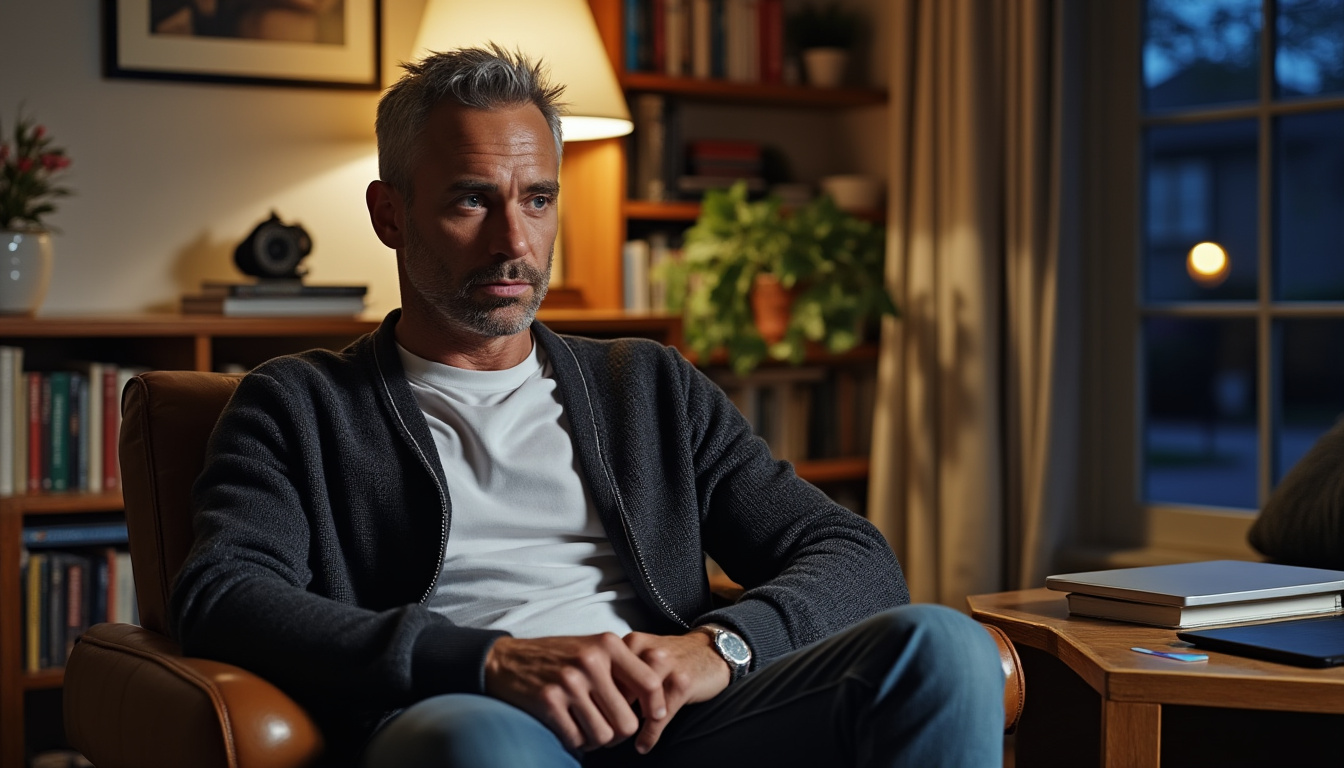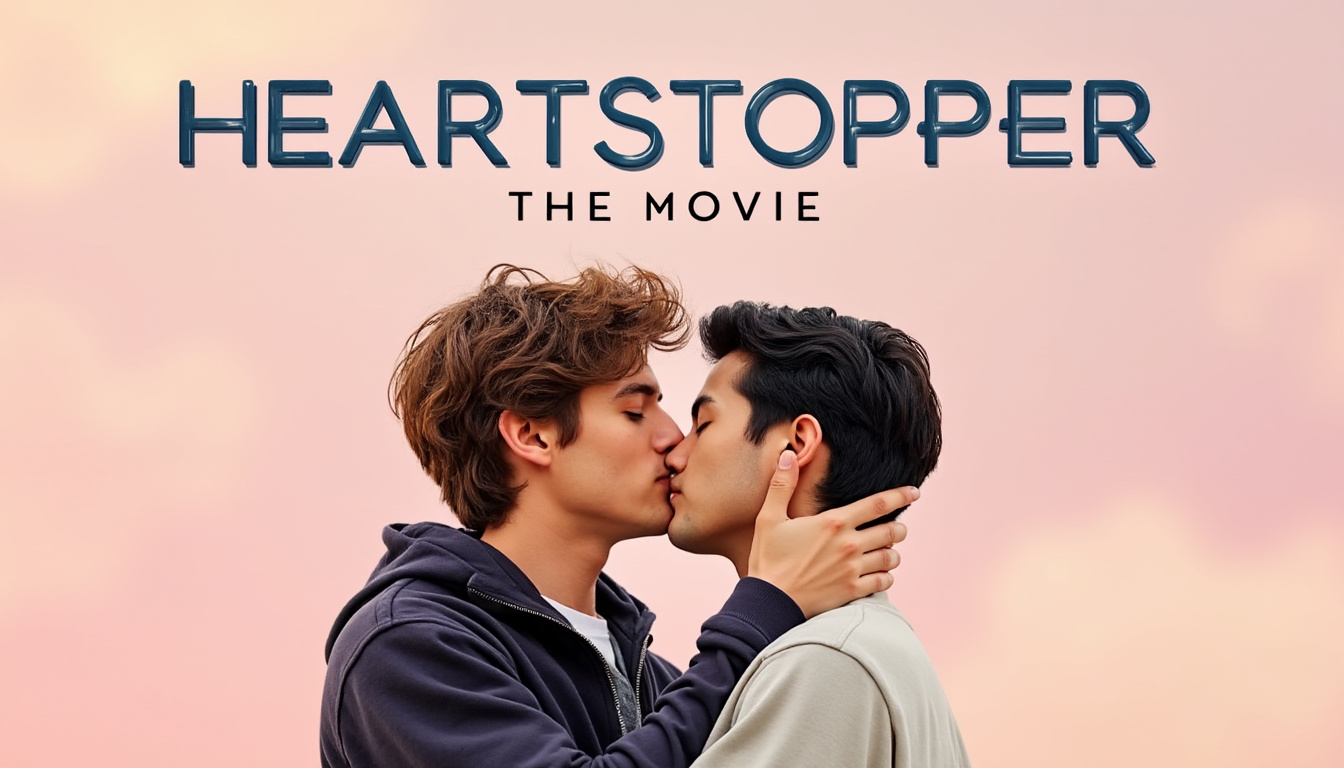As fans of the beloved Netflix series Heartstopper embrace the emotional journey of its characters, a monumental announcement has surfaced: the series will conclude its poignant tale not with a typical season finale, but with a feature film. Joe Locke, the actor who portrays Charlie Spring, has provided insights into this decision, clarifying the reasoning behind concluding the narrative in film format rather than a drawn-out fourth season. This transition reflects both logistical considerations and a desire to encapsulate the essence of the series in a cinematic experience.
The Decision to End Heartstopper with a Feature Film
In the landscape of modern television, where many popular shows have been extended into multiple seasons, the choice to conclude Heartstopper with a film marks a significant departure from tradition. Joe Locke emphasized several factors that contributed to this pivotal decision.

Logistical Challenges of Filmmaking
Locke pointed out that the film format provides a more manageable timeline for the cast and crew. He noted, “I think the time it would’ve taken to film a series, we just wouldn’t have been able to get everyone in the same place for five years.” This conundrum poses a risk of viewing audience fatigue, where by the time much-awaited content is released, the passion might wane. The narrative crafted by Alice Oseman, the creator behind Heartstopper, thrives on immediacy—something that could be compromised by an extensive multi-season commitment.
Instead, a feature film allows for concentrated storytelling. With a singular focus, the filmmakers can dive deeper into character arcs and emotional beats, achieving a more dynamic and engaging experience. Locke pointedly remarked that, “It makes it feel more cinematic, more grand, and gives it the ending it deserves.” The drive to encapsulate the heartwarming yet complex relationships of LGBTQ+ youth in a concluding film resonates with audiences yearning for closure.
Keeping the Story Alive Through Adaptation
As the film adapts Heartstopper Volume 6, which holds the key to the characters’ futures, it brings forth additional layers to the narrative. Locke expressed excitement about the script, underscoring that it retains the charm of the earlier seasons while adapting to the film’s grand scale. Given the acclaim surrounding previous seasons, there is a sense of anticipation regarding how the final moments of Charlie Spring and Nick Nelson’s journey will unfold.
- Character Development: Expanding on the growth and evolution of Charlie and Nick.
- Emotional Closure: Crafting a satisfying conclusion to their love story.
- Addressing Themes: Delving into significant LGBTQ+ issues in a powerful narrative thread.
Insights on the Filming Process
As discussions swirl regarding the film’s premise and storyline, Locke has also shared snippets of information about the production timeline. He mentioned that the cast intends to begin shooting the film “very soon,” with hopes of releasing it in 2026. This timeline creates an exciting buzz, especially since fans will not have to wait long to see the culmination of the beloved series, especially as new content often takes years to materialize.

Meeting Fan Expectations
The anticipation surrounding the film can also be attributed to the diverse and passionate Heartstopper fanbase. Fans have formed communities that celebrate not just the series but its representation of LGBTQ+ relationships and issues. A production team dedicated to creating a rich, visually engaging movie is key to maintaining existing momentum. Locke has hinted at the thoughtfulness involved in crafting a narrative that honors its roots while simultaneously evolving into a film. The key goals seem to pivot around enriching the storytelling, enhancing character intimacy, and elevating the overall visual experience.
As a nod to the fans, it is expected that beloved supporting characters will remain prominent in the film, a decision made to maintain the ensemble’s dynamic and ensure a comprehensive closure for viewers. This film will distinctly explore the implications of Charlie and Nick as they navigate the typical highs and lows of adolescent love amid societal pressures.
Contribution of the Creative Team
Another vital aspect of this project will be the collaboration among creators, many of whom have been integral to the Heartstopper franchise. Alice Oseman, who penned the original graphic novels, continues her role as executive producer and screenwriter for the film. This collaboration is pivotal as it preserves the authenticity that fans have embraced throughout the series.
- Screenwriter’s Vision: Oseman’s insights into character-driven narratives.
- Production Quality: High production values expected akin to successful films from studios like A24.
- Collaborative Spirit: Involving the original team fosters continuity in the storytelling approach.
Anticipation for Heartstopper’s Film Premiere
The excitement surrounding Heartstopper‘s transition from a TV series to a feature film reflects the larger trends in cinematic adaptations of beloved narratives. The shift from multiple episodes spread over several seasons to a compact film offers both challenges and opportunities. Locke’s comments suggest that the film’s release is now even more anticipated as fans speculate on how their favorite characters will find closure.

What Do Fans Expect from the Film?
As the production gears up, fans have taken to social media, expressing their hopes and desires for the movie. The expectations often revolve around several critical areas:
- Authentic representation of queer relationships and issues.
- An emotionally resonant conclusion for all central characters.
- Expanded character backstories that provide nuanced perspectives on their development.
Particularly, the anticipation centers around how the film will encapsulate the essence of youth experience, catering to a wide-ranging audience while providing representation to marginalized communities. The objective remains clear—to create an engaging, meaningful film that resonates with core themes of love, friendship, and self-acceptance.
Filmmaking Trends
With the rise of streaming platforms like Netflix, the landscape for producing films and series has shifted dramatically. The trend towards adaptations from graphic novels and literature signals a broader cultural appreciation for storytelling mediums. Recent years have also highlighted a significant increase in LGBTQ+ representation in media, making films like Heartstopper crucial for fostering acceptance and understanding within society.
Furthermore, as seen in productions like HBO’s Queer Eye and multiple A24 films, there is a consistent drive towards authentic narratives that resonate with diverse audiences.
Exploring Cultural Impact Through Cinematic Adaptation
The choice to transition Heartstopper into a feature film ultimately reflects a broader cultural movement towards narrative inclusivity within mainstream films. As such projects gain momentum, they offer greater visibility not only to stories that resonate with specific communities but also to universal themes of love and acceptance that can foster understanding across diverse audiences.
Deepening Connections with Viewers
The film aims to cultivate a deeper connection with viewers, bridging the gap between what has been previously experienced on-screen and what can be universally felt. The depth of storytelling in such films serves a dual purpose: it entertains and educates. Audiences walk away not just with smiles or tears but with a deeper understanding of the human condition—growing pains, the search for identity, and the celebration of love.
- Cultural Resonance: Greater awareness on LGBTQ+ issues.
- Community Engagement: Inspiring dialogue between fans and newcomers alike.
- Empathetic Storytelling: Fostering empathy through shared experiences.
Broader Implications for Future Productions
The film adaptation of Heartstopper sets an essential precedent for future screenwriters and filmmakers seeking to explore similar themes. The willingness of a streaming platform like Netflix to invest in this story underscores the shift in audience expectations, where viewers are looking for personal, meaningful stories that resonate on a deeper level. This adaptation serves as a model that can potentially influence the production of other LGBTQ+ narratives, proving that there is a strong market and need for diverse storytelling.
This anticipated film is shaping up to be not only a milestone in Locke’s career but also a seminal moment for the representation of LGBTQ+ stories in mainstream media, paving the way for future filmmakers to follow suit.


